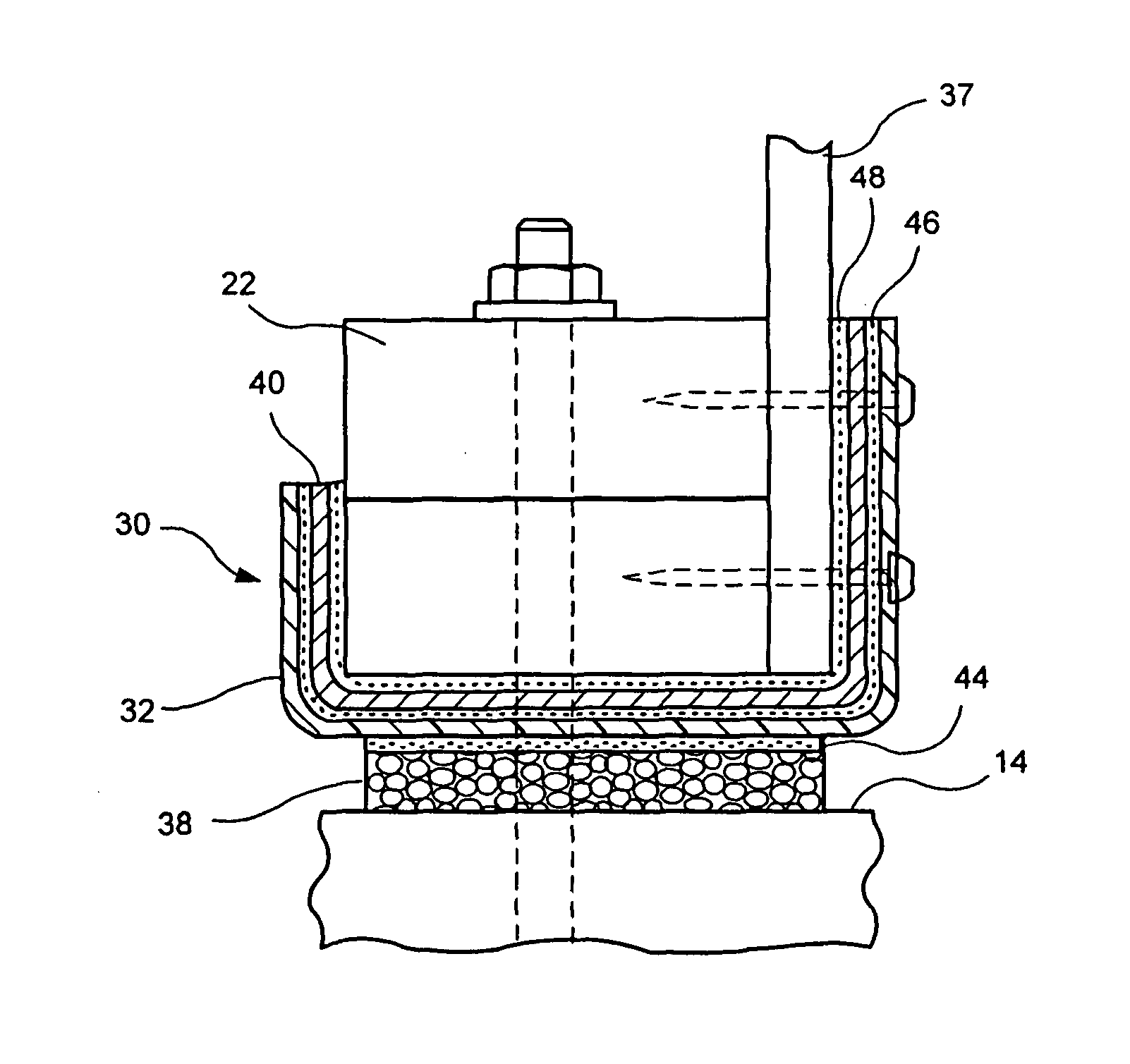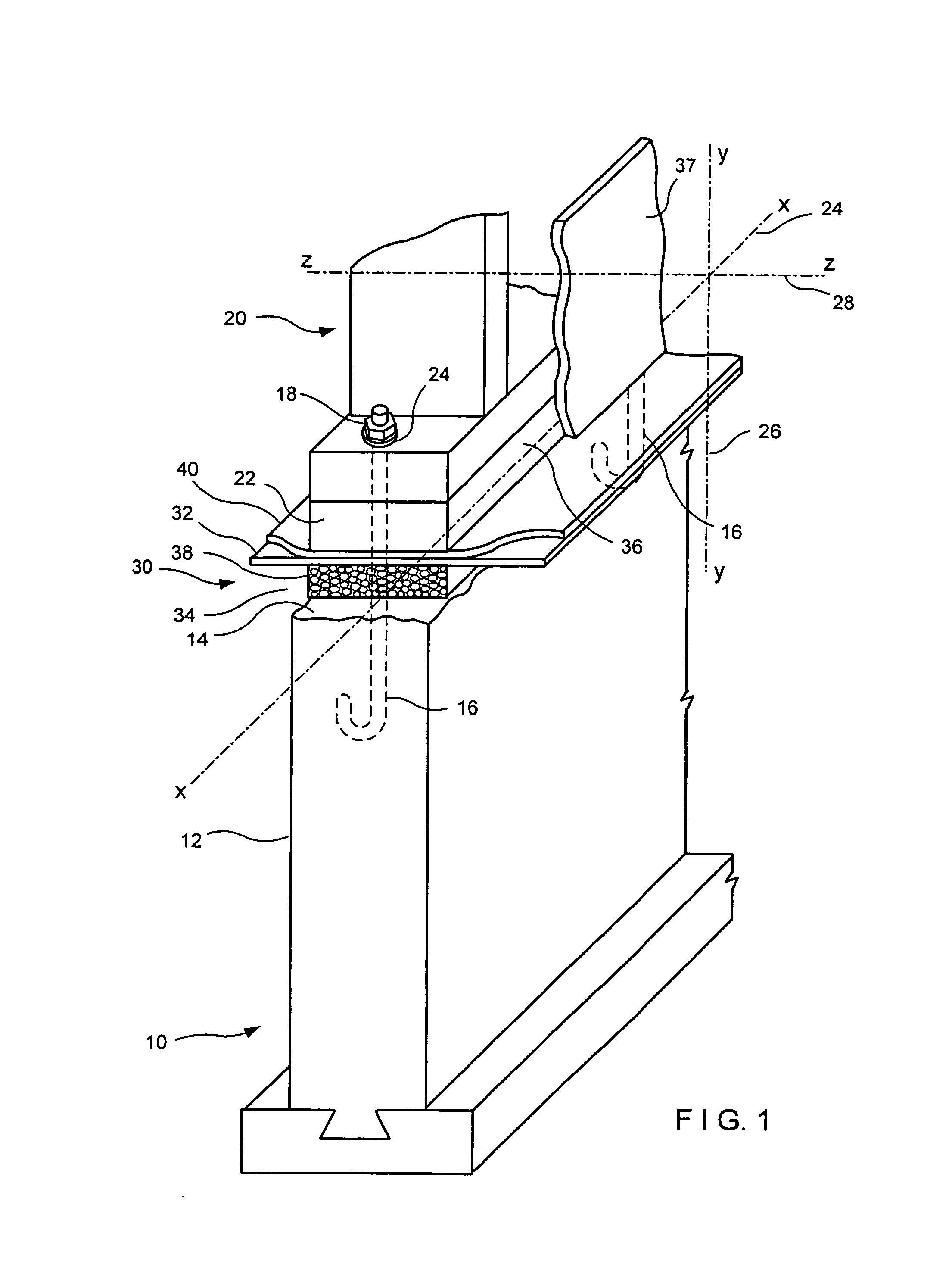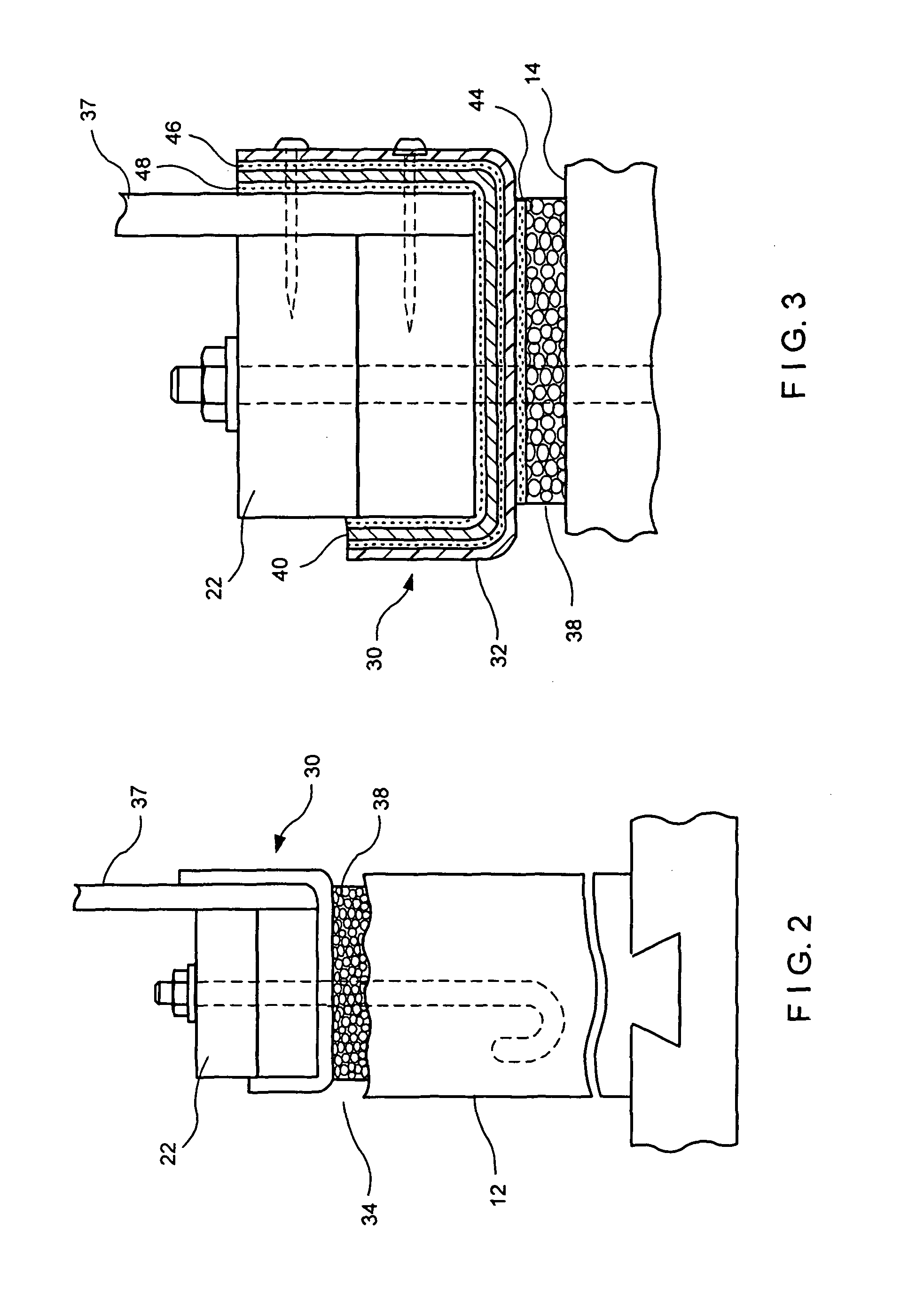Combined sill seal and termite shield (SSTS)
a sill seal and combined technology, applied in the field of dual-purpose devices, can solve the problems of building structure movement on the foundation or even slipping off the foundation, damage to the building, and injury to the occupants, and achieve the effect of enhancing tear and puncture resistan
- Summary
- Abstract
- Description
- Claims
- Application Information
AI Technical Summary
Benefits of technology
Problems solved by technology
Method used
Image
Examples
Embodiment Construction
In the sill seal and termite shield (SSTS) of this invention, pressure-activated adhesives are used to attach a combination device of a foam sill seal, a waterproofing membrane, and a termite shield to at least one side of the sill plate and to the uppermost surface of the foundation. The SSTS is emplaced atop the foundation and receives thereon a sill plate. The weight of the sill plate pushes the foam cells of the sill seal into the irregular surface of the foundation wall and anchors the waterproofing membrane and the termite shield. The barrier function of the termite shield portion increases the longevity of the sill plate by precluding penetration thereof by termites and other wood boring insects. The weatherproofing membrane is of a high tensile strength material thereby improving tear and puncture resistance.
Referring now to FIGS. 1 through 4, the first embodiment of this invention in which a poured concrete foundation, referred to generally by the reference designator 10, i...
PUM
 Login to View More
Login to View More Abstract
Description
Claims
Application Information
 Login to View More
Login to View More - R&D
- Intellectual Property
- Life Sciences
- Materials
- Tech Scout
- Unparalleled Data Quality
- Higher Quality Content
- 60% Fewer Hallucinations
Browse by: Latest US Patents, China's latest patents, Technical Efficacy Thesaurus, Application Domain, Technology Topic, Popular Technical Reports.
© 2025 PatSnap. All rights reserved.Legal|Privacy policy|Modern Slavery Act Transparency Statement|Sitemap|About US| Contact US: help@patsnap.com



